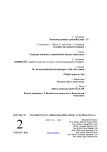-
Medical journals
- Career
Chest trauma in a district hospital
Authors: Jan Kačer
Authors‘ workplace: Chirurgické oddělení, Nemocnice Kyjov
Published in: Úraz chir. 20., 2012, č.2
Overview
Purpose of the study:
To analyse the group of patients with thoracic injury treated in a district hospital and to optimise the management of these patients.Material and methods:
The medical records of 2177 patients treated for thoracic injury in outpatient or inpatient departments of Kyjov district hospital from 2007 to 2011 were retrospectively analysed. Based on these data we evaluated each type of injury, the number of hospital admissions and the final management including transport to the trauma center.Results:
Total of 2153 patients with chest trauma were treated in our hospital. Of these patients, 1683 (77,31 %) were managed in OPD (outpatient deparment) and in 470 (21,59 %) admission was necessary. 24 patients (1,10 %) required referral to the trauma centre. The most frequent type of injury was the combination of the chest contusion and musculoskeletal trauma with the traumatic pneumohaemothorax. Pneumothorax and/or haemothorax was present in 133 hospitalised patients. In 57 of them the chest tube was inserted. Flail chest was diagnosed in 9 patients, in all of them the plate osteosynthesis for chest wall stabilization was performed. There was no urgent thoracotomy performed in our hospital during the observed period. In 3 patients, acute thoracotomy was necessary. The videoassisted thoracoscopy was performed in 13 patients with thoracic injury. In 9 of them retained haematoma was evacuated and the chest tube was inserted under visual control. In 1 patient VATS was employed in the treatment of posttraumatic empyema.Conclusion:
Essentials of the chest trauma management are: immediate diagnosis, presence of appropriate medical staff and technical equipment, good cooperation between the specialists, reevaluation of the clinical status of the patient, consideration of all the treatment possibilities in a district hospital and therefore making a decision about the final treatment or referral to the nearest traumacentre.Key words:
thoracic trauma, pneumothorax, haemotorax, chest wall stabilisation.
Sources
1. ČECH, J. PEŠEK, J. PECHMAN, V. et al. Traumatická disekce RIA jako příčina rozsáhlé ischemie myokardu. Cor Vasa 2011, 53, 737–739.
2. ČERNÝ, J. et al. Špeciálna chirurgia. 3, Chirurgia hrudníka. Martin: Osveta, 1993. 375 s.
3. DEMEŠ, R., ČERMÁK, S. et al. Videotorakoskopie a videoasistované chirurgické výkony u penetrujících poranění hrudníku. Rozhl chir. 2001, 80, 304–307.
4. DRÁBKOVÁ, J. Polytrauma v intenzivní medicíně. Praha: Grada, 2002. 307 s.
5. GRANETZNY, A.,ABD ELAAL, M., EMAM, E. et al. Surgical versus conservative treatment of flain chest. Evaluation of the pulmonary status. Interact Cardio Vasc Thorac Surg. 2005, 4, 583–587.
6. HÁJEK, M. Traumatologie hrudníku. Praha: Avicenum, 1980. 240 s.
7. HARA, H. a YOSHIMURA, H. „Traumatic lung injury. Kyobu Geka 2004, 57, Suppl. 8, 762–769.
8. HOCH, J. LEFFLER, J. et al. Speciální chirurgie. 2. vydání. Praha: Maxdorf, 2003. 224 s.
9. KULSHRESTHA, P. MUNSHI, I. a WAIT, R. Profile of chest trauma in a Level I Trauma Center. J Trauma. 2004, 57, 576–581.
10. LAFFERTY, P. M., ANAVIAN, J., WILL, R. E. Operative treatment of chest wall injuries: indications, technique, and outcomes. J Bone Joint Surg Am. 2011, 93, 97–110.
11. LUKÁČ, L., PLEVA, L. Nestabilní hrudník a poranění srdce. Úraz chir. 15, 2007, 4–7.
12. MAŠEK, M., MACH, P. Benefity stabilizace hrudní stěny. In: [online]. 1.09.2011 [cit. 20120520]. Dostupné z: www.kongresmikulov.cz/prog.htm
13. MÜLLER, M. a spolupracovníci. Chirurgie pro studium a praxi. Praha: Goldstein & Goldstein, 1997. 441 s.
14. NIRULA, R., DIAZ, J. J., TRUNKEY, D. D. et. al. Rib fracture repair:indications, technical issues, and future directions. World J Surg. 2009, 33 : 14–22.
15. POKORNÝ, V. a kolektiv. Traumatologie. Praha: Triton, 2002. 307 s.
16. ŠAFRÁNEK, J., ŠPIDLEN, V., KLEČKA, J. et al. Torakotomie pro hrudní trauma. Úraz chir. 2005, 13, 1–4.
17. ŠEVČÍK, P. ČERNÝ, V. VÍTOVEC, J. et al. Intenzivní medicína. Praha: Galén, Karolinum, 2000. 393 s.
18. ŠIMÁNEK, V., TŘEŠKA, V., KASAL, E. et al. Nestabilní hrudník – závažné komplikace konzervativní léčby (vnitřní pneumatická dlaha). Úraz chir. 2007, 15, 3.
19. VODIČKA, J. ŠAFRÁNEK, J. ŠPIDLEN, V. et al. Algoritmus diagnostiky a léčby plicních lacerací. Úraz chir. 2005, 13, 5–9.
20. VOMELA, J. Mediastinitis acuta. Brno: Scripta medica, 2000. 197 s.
21. VOMELA, J. Traumatologie hrudníku. In: [online]. [cit. 20120520]. Dostupné z: http://www.med.muni.cz/Traumatologie/Chirurgie_B/ch1/Hrudnik.htm
22. VYHNÁNEK, F. Principy ošetření poranění hrudní stěny. Rozhl Chir. 2011, 11, 637–.641.
23. VYHNÁNEK, F. FANTA, J. LISÝ, P. et al. Diagnostickoterapeutický algoritmus u tupého poranění hrudníku. Acta chir orthop Traumatolog Cech. 2000, 67, 324–328.
24. WAY, W. L. Současná chirurgická diagnostika a léčba. 1. díl. Praha: Grada, 1998. 800 s.
25. ZEMAN, M. et al. Speciální chirurgie. Praha: Galén, Karolinum, 2001. 575 s.
Labels
Surgery Traumatology Trauma surgery
Article was published inTrauma Surgery

2012 Issue 2
Most read in this issue- Contemporary management in liver injury
- Lower extremity vascular injury
- Chest trauma in a district hospital
Login#ADS_BOTTOM_SCRIPTS#Forgotten passwordEnter the email address that you registered with. We will send you instructions on how to set a new password.
- Career

